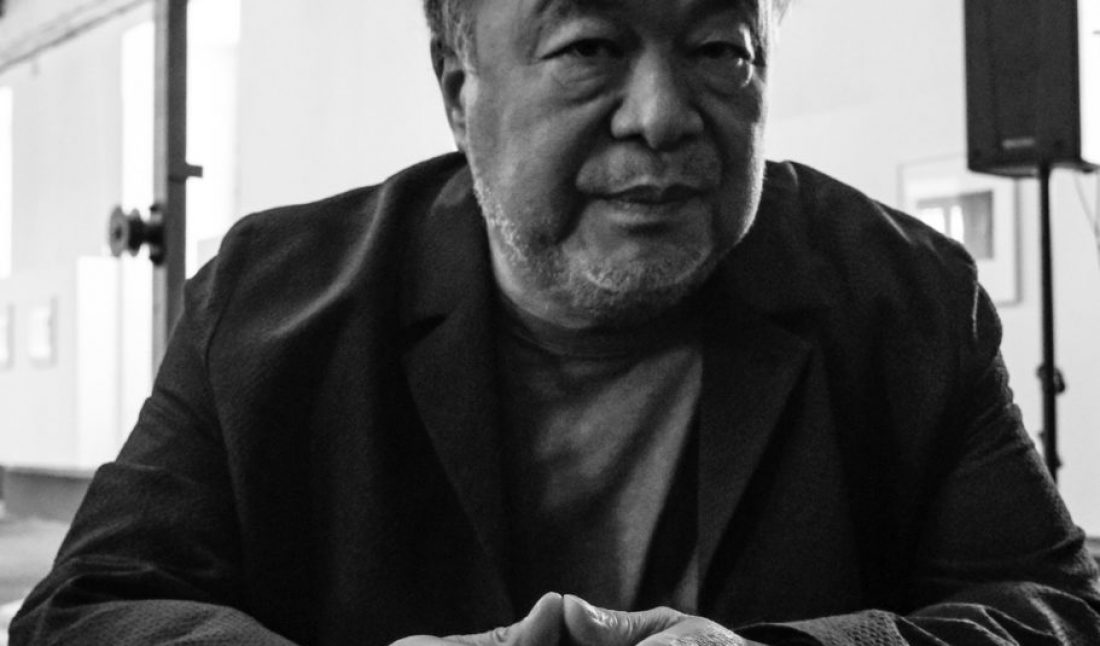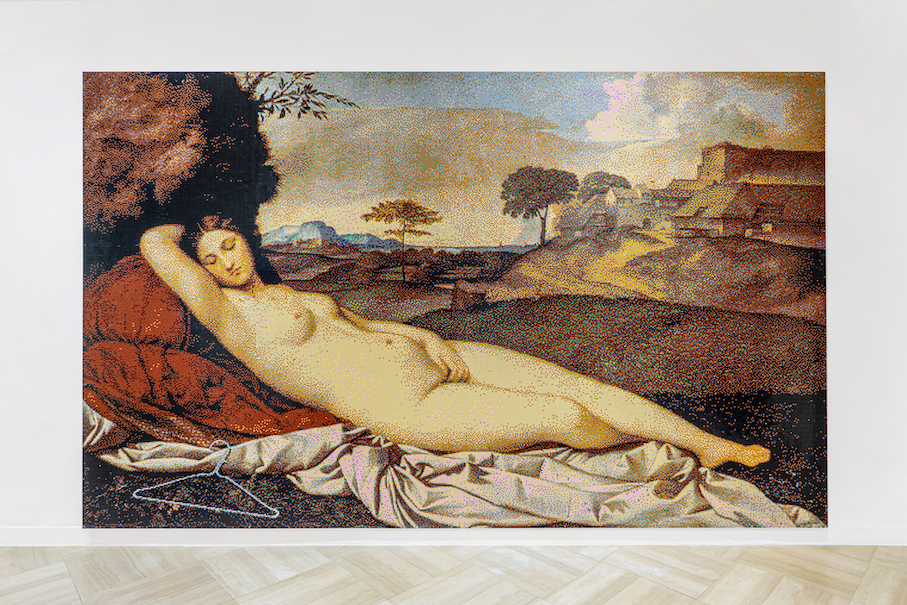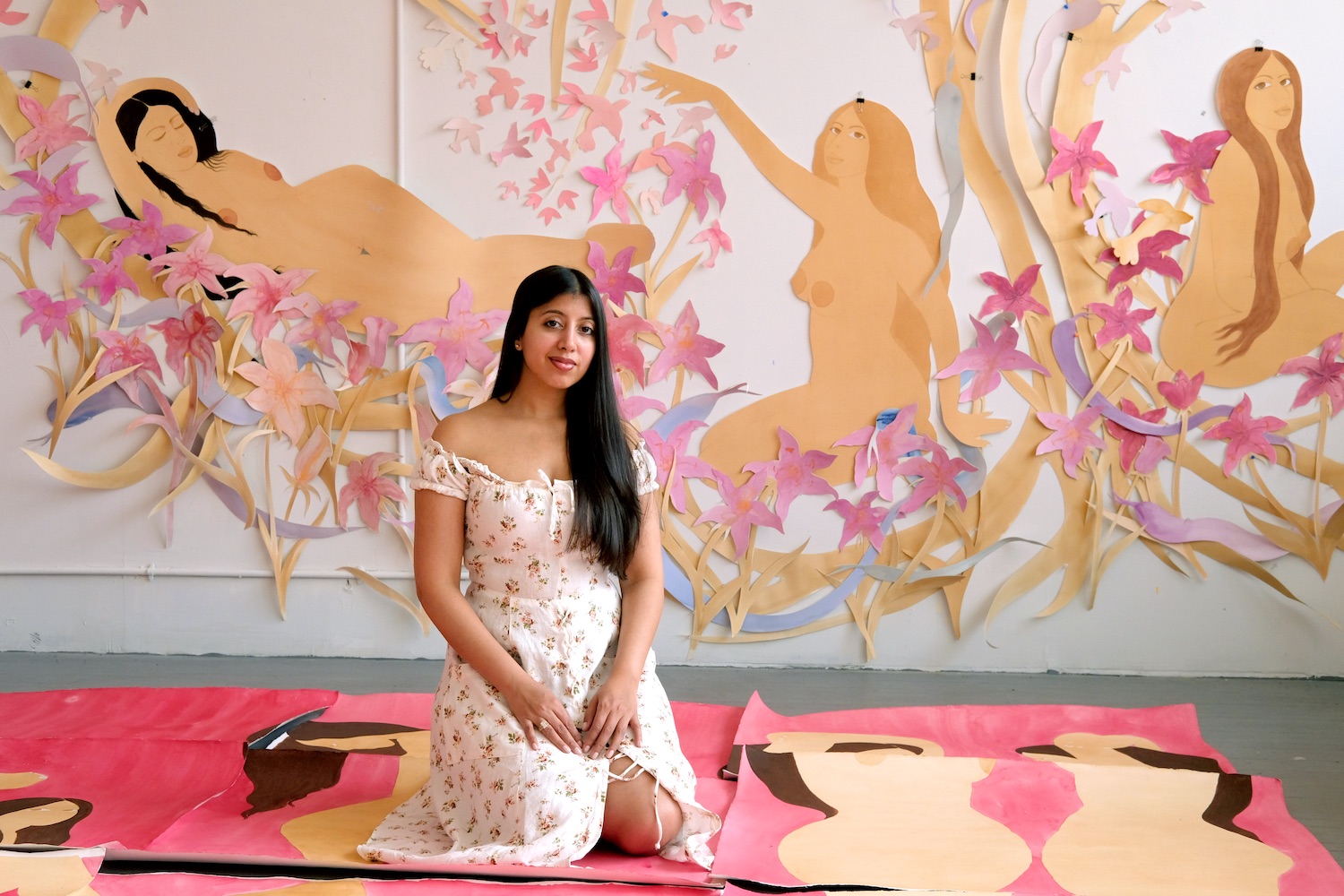This spring, we traveled to the countryside just outside of Lisbon, to sit down with the artist Ai Weiwei at his home and the site of his future studio. The sound of birds, near and far, and bells were a constant soundtrack to our conversation, as the artist discussed his current and first exhibition in Portugal, “Rapture,” on view at Cordoaria Nacional in Lisbon through November 28. Curated by Marcello Dantas, it features 85 works ranging from installation to sculpture and film, as well as a few new pieces created with local Portuguese craftspeople and materials.
The artist’s prolific practice sheds light, through various mediums, on current and past humanitarian crises, political revolutions, and cultural predicaments. In just the past year, he released four documentaries: Coronation, addressing the COVID-19 pandemic beginnings in Wuhan; Vivos, about the mass kidnapping of students from Ayotzinapa Rural Teachers’s College; Cockroach, capturing the democratic protests in Hong Kong; and Rohingya, focusing on the Myanmar refugee crisis.
Over tea, Ai shared with Whitewall how the restrictions on travel due to the ongoing pandemic have allowed him time to focus and enjoy being in one place.
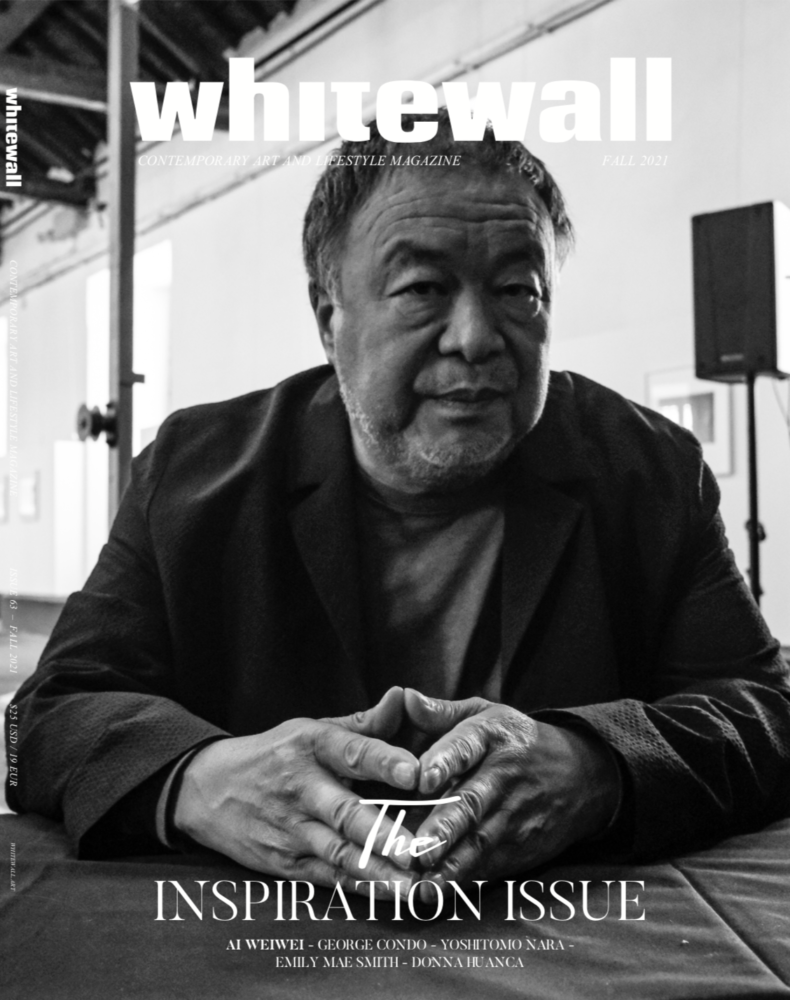 Portrait of Ai Weiwei by Aurélien Caoudal.
Portrait of Ai Weiwei by Aurélien Caoudal.
WHITEWALL: It’s really peaceful here.
AI WEIWEI: I enjoy it.
WW: When did you arrive?
AW: I’ve been here since end of last year. We have so many things to do.
WW: Is it easy to work from here?
AW: Anywhere outside China, it’s the same. I’ve been very busy, actually. I get energy from the nature.
WW: Can you tell us about your place here?
AW: This is about a hundred kilometers east of Lisbon, and it’s a countryside. Basically, you don’t see other houses when you look out. The neighbors have cows and land; they are farmers. I grew up in northwest China, in Xinjiang. I grew up in a farming area. So this kind of location brings me back to my childhood. I’m quite used to this kind of environment. Portugal is full of sunshine, lots of trees, and friendly people. I have no complaints about Portugal.
I’m in Portugal to establish my new studio here. I suppose sometimes I’ll need to travel. But I traveled heavily for past four or five years. Many travels have been canceled because of the pandemic. It gave me the best excuse not to travel.
WW: Your work Circle of Animals/Zodiac Heads is now part of the permanent collection at LACMA. Can you tell us about this work?
AW: It relates to people—we all have our zodiac signs. They tell us about our character and our fortune. So it’s a time to recognize humanity, to think about who we are and come back to the very essential characters of individuals. I think this work deserves to be in a good location, and I’m so happy that it’s in the collection at LACMA and it’s displayed in Los Angeles.
The zodiac were supposed to be a set feature in the garden of the Old Summer Palace that was looted by French and British soldiers in 1860. And that become such a shameful moment for China. Years later some appeared in auction houses, and the Chinese government used that as some kind of nationalism education, or patriotic act, to buy it back. They spent a lot of money trying to buy it back.
My work is always dealing with readymade, political issues, culture, misunderstanding, value, strange judgment. So I said I will make a set, as or even more beautiful.
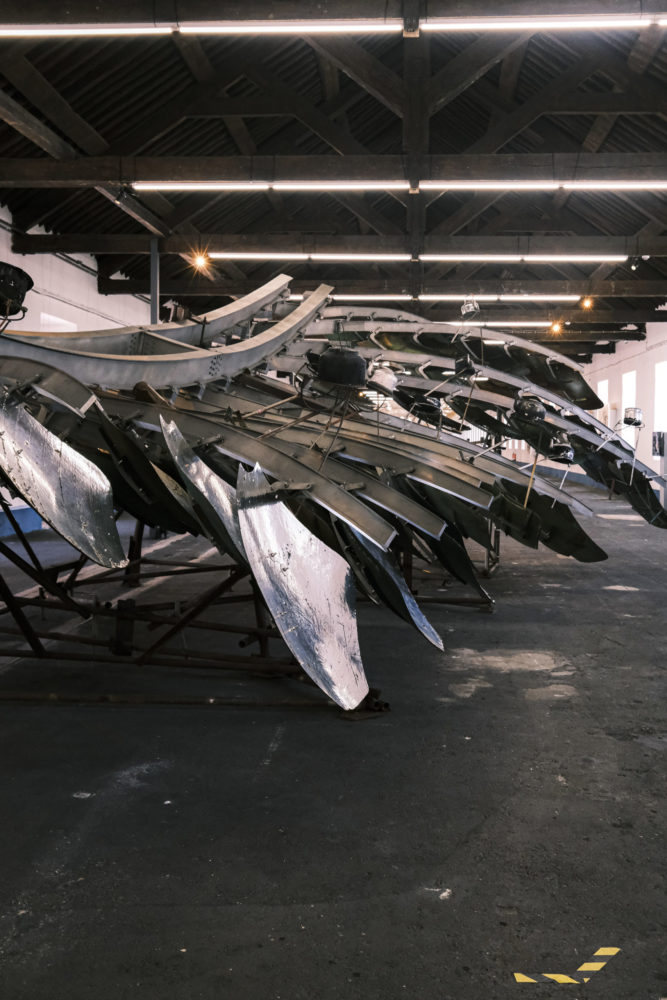 Installation view of “Ai Weiwei: Rapture,” on view at Cordoaria Nacional in Lisbon through November 28, photo by Aurélien Caoudal.
Installation view of “Ai Weiwei: Rapture,” on view at Cordoaria Nacional in Lisbon through November 28, photo by Aurélien Caoudal.
WW: Now the zodiac are appearing in your Lego works. Do you have plans to expand them in future project?
AW: I always take an object or topic and develop it into different languages, a self-contradiction. I take objects and make interpretations, and remake into another interpretation. Bronze zodiac is very classic for making statues. But Lego, nobody even takes it as a serious object. Lego is childish play. I think Lego is a very nice art form, no different from Rembrandt or Van Gogh.
It’s all made of pixels. Lego is today’s media. Their colors are so vivid, and it’s not just personal taste. It’s precisely digitally perfect. And they are not really fat, so in that sense it’s really a painting or sculpture, or installation.
WW: This summer and fall, your exhibition “Rapture” is on view at the Cordoaria Nacional in Lisbon. How did this show come together?
AW: It was initiated by a curator from Brazil, Marcello Dantas. The exhibition is in a very unique place, which is not a museum, but a historical building. I’ve brought in a lot of my work in the past decades and it is my first exposure to the Portugal audience. I also made new works from local material, working with local craftsmen to construct new works.
The locals have a tradition in making porcelain and using the material of cork, and also marble stones. I’m trying to make a few more works in relation to Portugal culture.
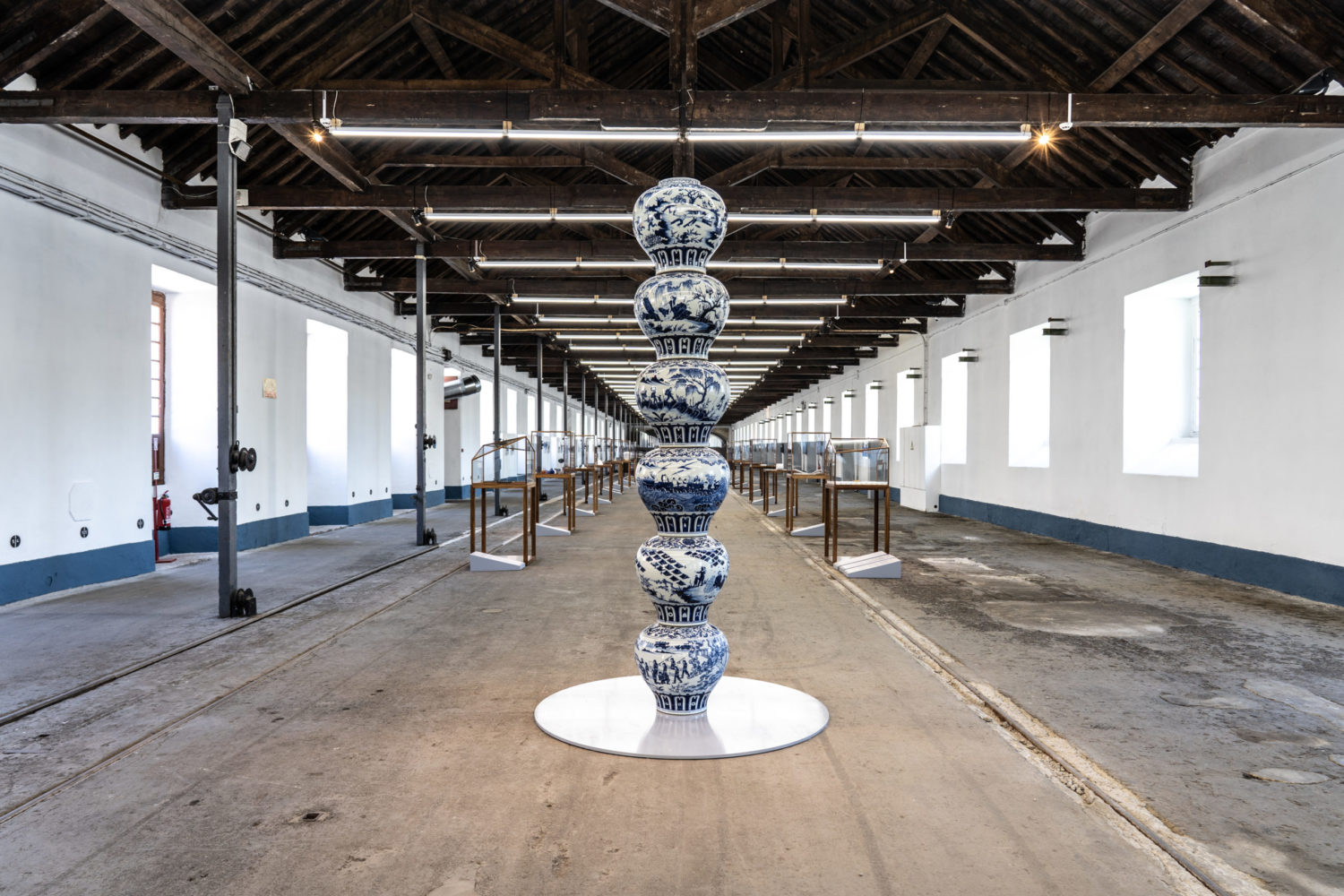 Installation view of “Ai Weiwei: Rapture,” on view at Cordoaria Nacional in Lisbon through November 28, photo by Juliette
Bayden, courtesy of Ai Weiwei.
Installation view of “Ai Weiwei: Rapture,” on view at Cordoaria Nacional in Lisbon through November 28, photo by Juliette
Bayden, courtesy of Ai Weiwei.
WW: One of the works on view is Snake Ceiling (2009), made of hundreds of children’s backpacks, in memory of the students who died in the 2008 Sichuan earthquake. Regarding that same tragic event, you’ve organized a commemoration on Clubhouse, naming the 5,196 children killed in the earthquake. Why did you want to use this platform as a service to memorialize, and how do you see it in relation to previous work addressing this tragedy?
AW: Thank you for asking this question. This project is ongoing, with the reading lasting for months, 24 hours a day, every four seconds, one name will be said. I used the platform Clubhouse to complete this conceptual art and performance work with global citizens that was not possible before. This opportunity is, I think, the best way to serve the Chinese community here, U.S., France, in Australia, and China.
We took the opportunity to use the newest technology for communication in order to carry our message, to remember the past, remember the life, remember those who have been victimized by the negligence of the society. This is for me so crucial. Bad things happen every day, and people stop having the same sensitivity. That becomes a psychological problem of modern people, to not respect life itself, not to care.
WW: In 2020 alone, you made three documentaries: Vivos, Coronation, Cockroach. What was it like to make three in one year?
AW: And we have another one also made, Rohingya. We made four films this year. This year gave me the possibility to concentrate on my work.
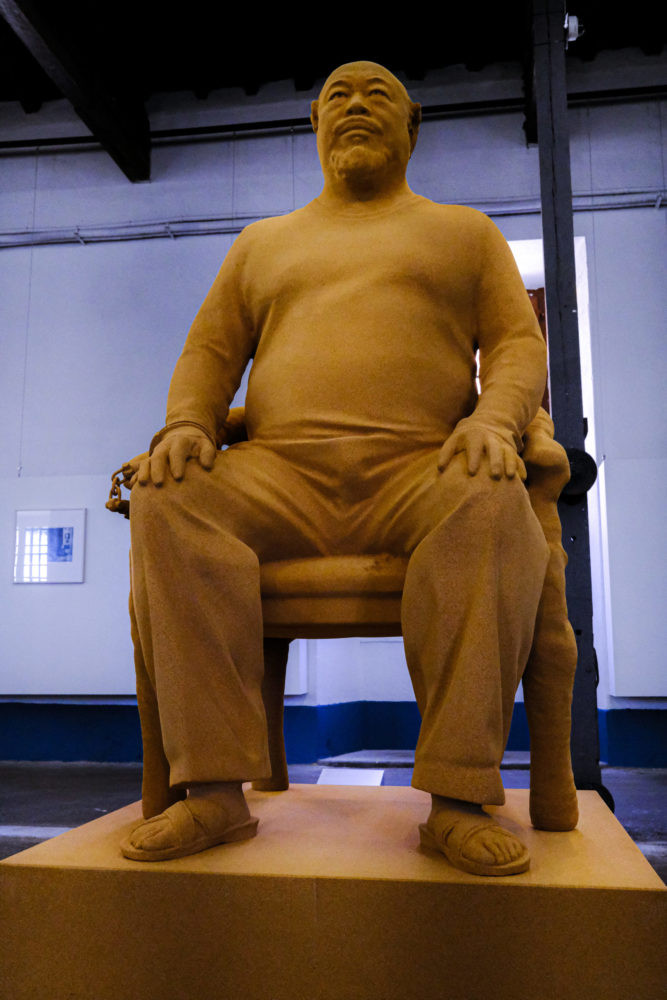 Installation view of “Ai Weiwei: Rapture,” on view at Cordoaria Nacional in Lisbon through November 28, photo by Aurélien Caoudal.
Installation view of “Ai Weiwei: Rapture,” on view at Cordoaria Nacional in Lisbon through November 28, photo by Aurélien Caoudal.
WW: Coronation was made remotely, entirely from everyday citizens of Wuhan. Can you tell us about the challenging process of collecting that material and what it meant for the ordinary citizens to capture what they could?
AW: To make a film like that is not easy, because China, Wuhan, was in a lockdown situation. I managed to organize a team in the lockdown situation, in hospitals, as patients, as volunteers, because people could not move. It was very severe situation. But it’s a historical moment to record these personal stories. So we managed to have the film, the first film about the pandemic, first film and maybe the last film about Wuhan.
We sent it to the Toronto Film Festival, New York Film Festival. Then the answer was, “We cannot show it.” I cannot give you a clear reason why, but China is the biggest film market. No festival wants to hurt the feelings of the Chinese buyer. So much depends on the market. So of course, nobody wanted to show the film, and so we put it online.
Even Human Flow, a film about the refugee situation, nothing about China, they refused. I understand it’s business. It’s no longer ideology or freedom of speech, new ideas, new art forms.
WW: So online ends up being the best way to distribute those films?
AW: For me, I’m making a film not just for the audience but also for myself. As an artist, I’m learning through my lens, my narrative storytelling. It helps me to find out so much about humanity, about joy, and a lot of sadness. Of course, I want to share it with other people, but you don’t want to share with people who don’t have the patience to let you finish your sentence. We still have a few films in our hands; we have to finish it. I’m still always wondering, maybe we just do it online. Of course, we’re not looking for commercial return.
WW: The citizens from Wuhan that helped you to make Coronation, do you see them as collaborators with you?
AW: Yes. I work with all kinds of people. I like to find possibilities for people. Because a lot of times, you’re educated this way, so you function this way, you have a set job, you have your goal. But I don’t think life is like that. It’s much bigger than that. Life is about discovery, making mistakes, about being in the wrong place, not just the right place, right time. I think we all have potential, but we don’t really recognize it. Or at least for a lot of people, they are not given the chance to discover the possibilities.
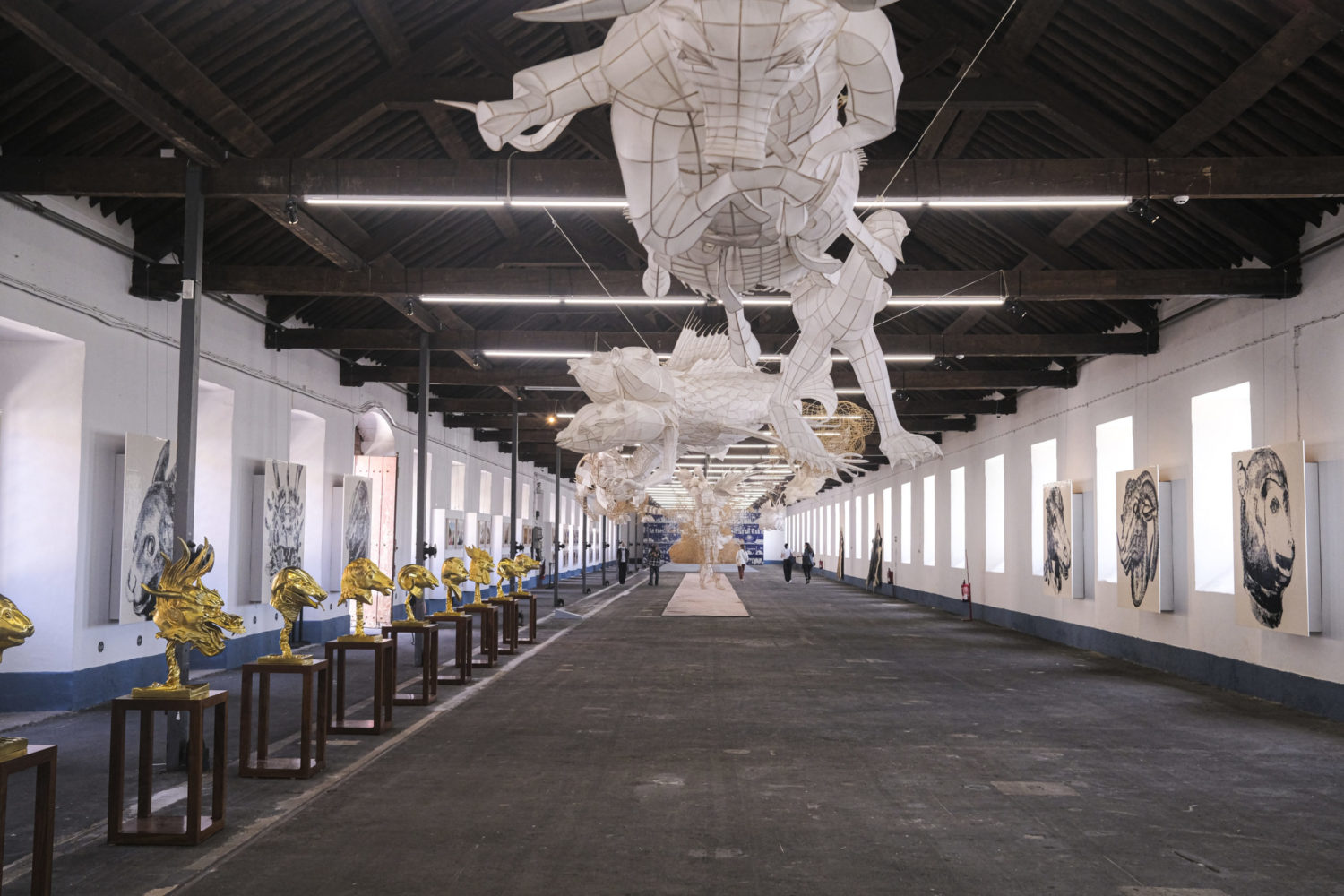 Installation view of “Ai Weiwei: Rapture,” on view at Cordoaria Nacional in Lisbon through November 28, photo by Aurélien Caoudal.
Installation view of “Ai Weiwei: Rapture,” on view at Cordoaria Nacional in Lisbon through November 28, photo by Aurélien Caoudal.
WW: Speaking about Cockroach, you’ve described yourself in solidarity with the pro-democracy demonstrators of Hong Kong. In what way do you feel connected?
AW: Well, it’s very sad story about Hong Kong. The young people there have a clear belief in a liberal world. They want to achieve their life goals under a democratic society. And sadly, they realized China is taking over. So, they defend their freedom, their salary and job opportunity, the rights to be independent. But of course, that’s not going to be recognized by Communist China. It’s been crushed. And they lost everything. They are totally under the control of China. It’s an ending I predicted from beginning, but still, their act is heroic. When we see something heroic it’s not practical; it’s about a higher ideology and devoting oneself to that ideology.
I thought that act needed to be documented to make a documentary, and also the world should understand what is happening in Hong Kong. That’s why I feel deeply connected to those young people, the fighters, the freedom fighters.
WW: You mentioned another recent documentary, Rohingya. Can you tell us about that?
AW: Rohingya is about Myanmar refugees. The group is one of the very unique groups because they have always been seen as a stateless people. The Rohingya are being pushed away by Myanmar’s government, military, police—it’s a kind of genocide. They are being raped, burned, and killed, so they have to escape to Bangladesh. The camp in Bangladesh is not large, but contains almost one million refugees. I spent time with them; I see them as very unique. They are calm, they are soft, they are very respectful people, like a village. They have elderly, children, their own community. We carefully recorded how they live under that kind of condition. The whole film is no dialogue; it’s of the images.
WW: How do you see your documentary filmmaking in relation to your artistic practice?
AW: I always see my practice as one, never separated. I do sculpture, installation, films, online activities, performance, interviews, and writing. I will have my book come out very soon. I think of everything as one. It helps bring me into the reality and get me introduced to the world and it gives me proper information that allows me to act in different forms. It benefits me in every way.
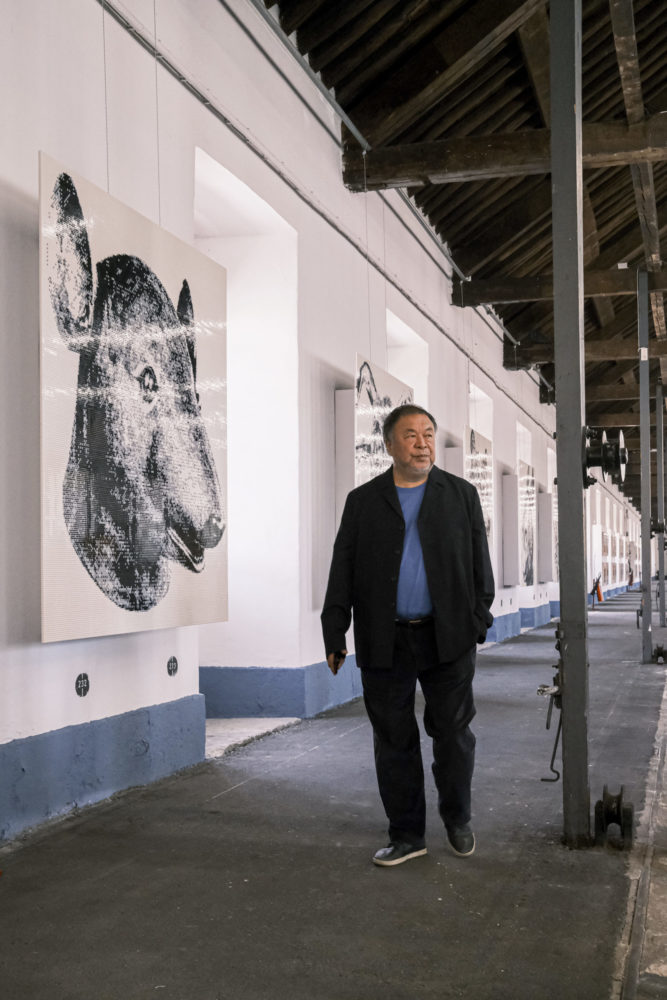 Installation view of “Ai Weiwei: Rapture,” on view at Cordoaria Nacional in Lisbon through November 28, photo by Aurélien Caoudal.
Installation view of “Ai Weiwei: Rapture,” on view at Cordoaria Nacional in Lisbon through November 28, photo by Aurélien Caoudal.
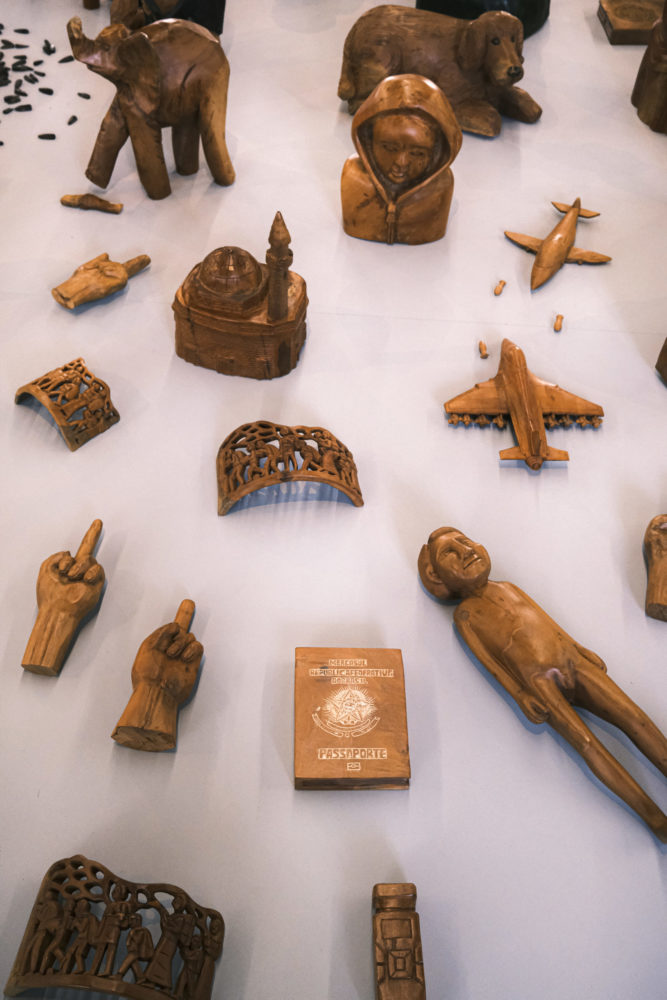 Installation view of “Ai Weiwei: Rapture,” on view at Cordoaria Nacional in Lisbon through November 28, photo by Aurélien Caoudal.
Installation view of “Ai Weiwei: Rapture,” on view at Cordoaria Nacional in Lisbon through November 28, photo by Aurélien Caoudal.
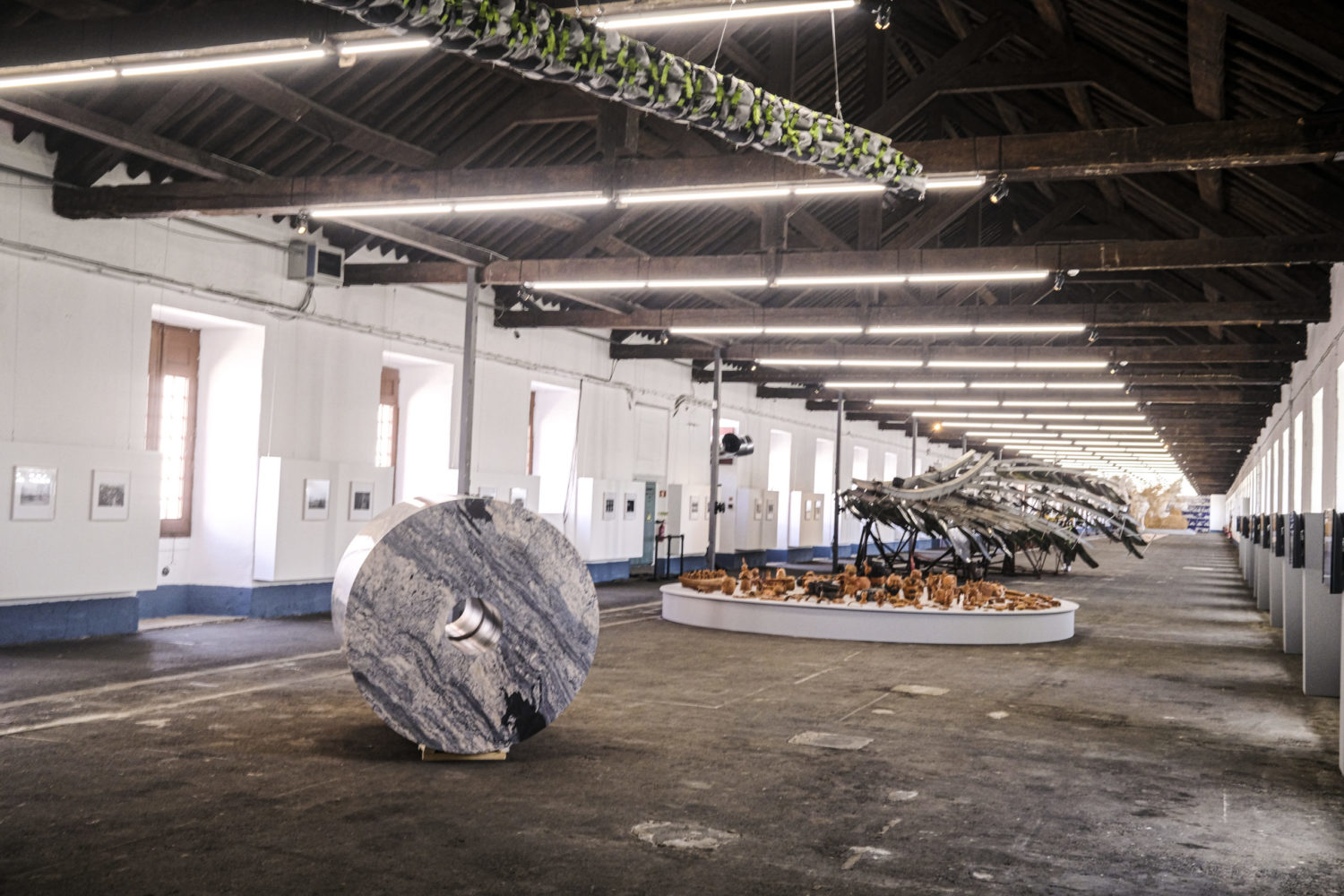 Installation view of “Ai Weiwei: Rapture,” on view at Cordoaria Nacional in Lisbon through November 28, photo by Aurélien Caoudal.
Installation view of “Ai Weiwei: Rapture,” on view at Cordoaria Nacional in Lisbon through November 28, photo by Aurélien Caoudal.






